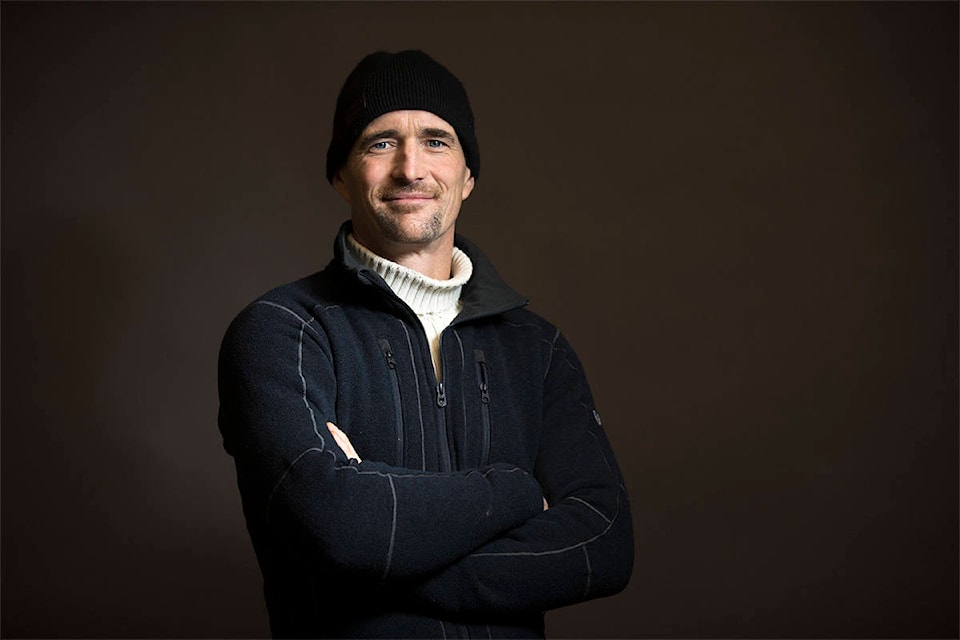A local “environmental industrialist” is proposing a second life for the former Whitehorse Copper Mine site that would reprocess tailings deposits and produce clean energy.
“There’s renewable energy within the tailings, (presenting) a huge opportunity which could power the territory for well over 100 years,” Adam Greetham told the Yukon News.
Greetham is the owner of Groundtrax Environmental Services Inc., a Yukon-based firm that took full ownership of the mine site in 2015. He previously held partial ownership of the site.
Greetham has over 20 years of experience in site and environmental remediation. In 2015, he won the Yukon Innovation Prize for an invention that manages household radon.
He has been working towards remediation at the copper mine site since 1997.
“I found this site to be like, ‘Wow, this is where I can advance remediation technologies,’” Greetham said.
He purchased one of the site’s mineral claims in 2004 and has since worked with the University of British Columbia to assess the site’s tailing deposits.
The tailings are a byproduct of the former mine’s milling operation and are rich in magnetite iron ore, Greetham found. Most commercially viable deposits of magnetite ore contain between 50 and 60 per cent iron. The copper mine site ore presented as 68 per cent iron, making it “ultra clean” and valuable to global markets, Greetham said.
He says there’s a “significant opportunity to recover valuable materials from these tailings,” including iron, gold and garnet.
“In my heart, it’s about the environment and wanting to utilize the benefit because it’s clean iron … (and) wanting to advance preferably clean technologies here,” Greetham said.
Researchers at McGill University have been studying the viability of producing clean energy with metal for over a decade.
McGill’s Alternative Fuels Laboratory, headed by associate professor Jeffrey Bergthorson, called metal fuel a “unique opportunity” in a 2018 report.
| This graphic shows how a combustor could produce clean energy from metal. (Courtesy of McGill University) |
“Metal fuels are the most promising candidate for the large-scale storage and transport of electricity, for remote power generation, for large vehicles and for international clean-energy trade,” Bergthorson wrote.
To create fuel, metal is ground into a powder and fed into a burner. More energy is generated from iron powder than gasoline, according to Bergthorson.
Once burned, the fuels release metal oxides that can be collected and reused.
“In this cycle, only energy is transported with no waste released to the environment or atmosphere,” Bergthorson wrote.
“Metals can be recycled, effectively, an infinite number of times and this recyclability is key to the concept of sustainable metal fuels.”
A cost comparison also favours metal fuel. Bergthorson values a barrel of diesel at $128, while an equivalent amount of iron is priced at $102 when its recyclability is factored into the cost.
“This analysis shows that iron and aluminum fuel can, in theory, be produced at costs lower than even what is considered ‘cheap’ diesel fuel today.”
Last spring, Bergthorson submitted a proposal to build a burner-power generation system in the Yukon, in partnership with Greetham’s Groundtrax.
The generation system would be fuelled by the magnetite tailings Greetham will extract from the copper mine site. In his proposal, Bergthorson estimates that the burner will produce 100 kW of heat.
The project will cost up to $5 million and be completed over three to five years.
Greetham is currently awaiting a permit to allow extraction and segregation from the Yukon government.
“What we need to be able to do is concentrate enough material to enable samples, analysis and project research,” Greetham said.
He has already been approved by the Yukon Environmental and Socio-economic Assessment Board (YESAB), but acquiring the quarry permit has been a longer process. Earlier consultations on the project lasted nearly a decade, and Greetham says he’s optimistic that “patience pays off.” He is in monthly contact with government officials, and is expecting approval in January 2021.
Matt Ball, lands director for the Department of Energy, Mines and Resources, said in an email that private interest in tailings reprocessing is “ongoing.”
“We are exploring a way forward that would create opportunity for the reprocessing and meet our needs as a community to reclaim the site,” Ball said.
The Yukon won’t be the first to see iron powder fuel. In October, Dutch researchers successfully installed iron fuel at a brewery powerplant in Lieshout, Netherlands.
“The beauty of iron fuel is that you can release the energy stored in iron fuel when and where you need it,” said Philip de Goey, professor at the Eindhoven University of Technology, in an article published by the university.
“No CO2 is produced during combustion and only rust remains…. It’s a circular process: you capture this rust powder and sustainably convert it back into iron powder.”
De Goey is the scientific director of the Dutch cohort committed to iron fuel technology, which they call the “superhero that will help us meet our climate goals.”
The team’s website ambitiously states that iron will solve the issue of big industry. Power plants and heat-demanding industries are currently responsible for 40 per cent of global CO2 emissions.
According to Greetham, the Eindhoven University of Technology beat Yukon University to the punch on iron fuel technology.
“They were in competition,” Greetham said.
“What I’ve been focusing on is educating our local government about the technologies that are advancing using magnetite.”
For Greetham, iron’s potential for producing clean energy is a main driver behind the project. It’s also an opportunity to breathe a second life into the abandoned copper mine site.
“We don’t need to go and open brand new operating mines… (when) Whitehorse copper is an internationally-renowned magnetite deposit,” Greetham said.
“This was a major mining operation, a 300-man mine for 20 plus years … pretty much the whole Whitehorse economy was focused around Whitehorse copper.
“It left all this waste behind, which is a $3 billion asset.”
Contact Gabrielle Plonka at gabrielle.plonka@yukon-news.com
